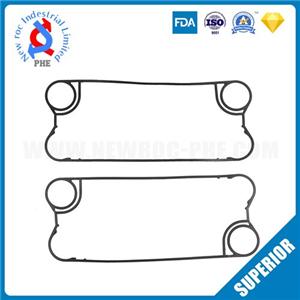Six steps of plate heat exchanger gasket replacement
The back leakage of the plate heat exchanger indicates that the rubber seal of the heat exchanger should be replaced. Then the main steps of rubber replacement are:
1. Inspection and testing of reuse performance. When rust is suspected, check the wall thickness of gasketed plate heat exchangers and pipes.
2. Remove the aging heat exchanger gasket.
3. After chemical cleaning, use a high-pressure air blowing device to remove the remaining chemical media on the surface of the plate heat exchanger plate, heat exchanger frame, etc.
4. Each heat exchanger plate is coated with a fluorescent test agent. Under the irradiation of ultraviolet light, check for small cracks and corrosion holes, and clean it again. In addition, check the sealing grooves on the heat exchanger plates and trim them if necessary.
5. For the adhesive heat exchanger gasket, the residual material will be removed and re-bonded with a blended adhesive. The recombined heat exchanger plates are wrapped in a special fixture and clamped to solidify the adhesive; Heat preservation in the holding furnace to achieve a suitable bonding effect. For non-adhesive heat exchanger gaskets, different devices are used to fix the heat exchanger gaskets in the heat exchanger plates.
6. Inspect the bonding position and bonding quality of each plate type heat sink, classify according to the installation order, and then carefully assemble the plate type heat sink group. ,
Replace the rubber gasket of the plate heat exchanger according to the above six steps, and the performance of the plate heat exchanger can be restored to its original state. It is recommended that users of plate heat exchangers pay attention to equipment dynamics to ensure normal operation of the equipment.




